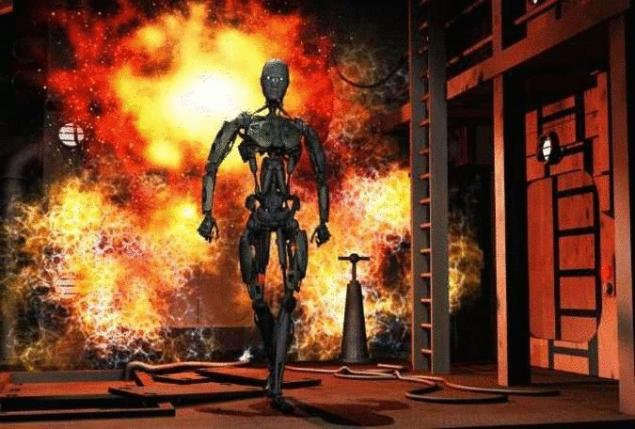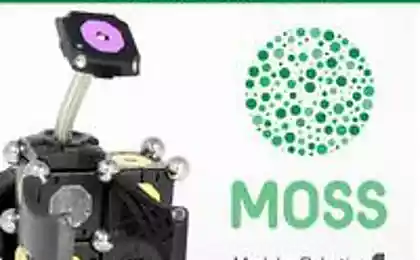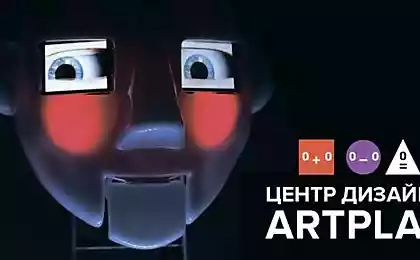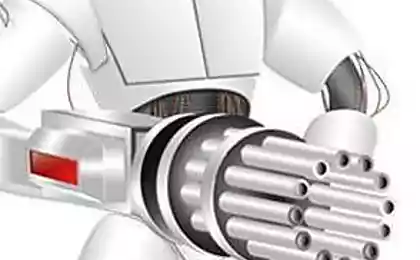471
Fire-fighting robot passed baptism of fire

One of the types of activities that people would prefer to shift on the shoulders of the robots is to combat fire on Board a seagoing ship or submarine.
In order to translate this idea into reality, the Office of research of the U.S. Navy (Office of Naval Research, ONR) some time ago started work on the creation of specialized fire-fighting robots, not so long ago the first prototype of the robot, Shipboard Autonomous Firefighting Robot (SAFFiR) was the "baptism of fire", taking part in extinguishing the "fire" on Board the training ship USS Shadwell.
The fire is the worst nightmare of any sailor or diver, especially if it occurs on Board a military vessel. In case of fire in the ordinary civil courts need only to provide search and evacuation of the crew to the lifeboats, but in the event of a fire on a military vessel that is not enough. In the latter case, it is required not only to prevent the fire to get to artillery cellars and warehouses of other ammunition, but also to keep the ship capable of combat operations, regardless of the extent of the spread of the fire.
As mentioned above, the result of efforts to fight fires on military vessels was the birth of the robot SAFFiR, a bipedal humanoid robot, with a height of 178 cm and a weight of 65 pounds. A basis for robot SAFFiR platform CHARLI-L1, developed by the specialists of the Technological University of Virginia (Virginia Tech). Due to the presence of more degrees of freedom than the number of degrees of freedom of the human body, the robot SAFFiR is able to perform unusual for a person of motion that allows it to work in incredibly difficult conditions to navigate through obstacles "tunnels" of the interior of the vessel.
"Balancing during movement on all types of surfaces, and perform certain actions is a very challenging task, especially for biped robots," says Brian Lattimer (Lattimer Brian), Professor of mechanical engineering from Virginia Tech, "the Control of the momentum of the whole body of the robot is due to the optimization algorithms of the movement and position of each joint of the robot. This ensures reliable retention of the center of mass of the structure, even when the robot on an unstable surface".
Created by order of ONR SAFFiR is a robot robot for operations on fire fighting and for conducting repair and rehabilitation works. It uses thermal (infrared) camera to determine its location and to identify the place of fire. In particularly difficult cases, in cases of continuous exposure heat and dense smoke, the robot uses a laser scanner, LIDAR and other sensors that allow him to see and navigate in the environment. Currently the robot is performing quite primitive commands that are passed to it by the remote operator. But, in the end, the robot is able to navigate through the compartments of the vessel, to seek out the fire, move to the nearest location of fire-fighting equipment, unwind and use the hoses.
A video showing the capabilities of the prototype robot, SAFFiR, was unveiled on 4 February 2015 at the scientific and technical military exhibit Naval Future Force Science & Technology EXPO. Tests of the robot were carried out on Board the training ship USS Shadwell from 3 to 5 November 2014. During the tests the robot was dressed in a special waterproof suit that protects the electronics and mechanical components from water droplets, spray a small hose, used a robot to extinguish flames.
The next step, which is going to make the robot's developers, will be creating another prototype, which will gain the ability to work autonomously thanks to the new control system has features of simple artificial intelligence. In addition, the new robot will receive a battery of greater capacity, the ability to move with greater speed and a more rapid communication system linking it with the outside world.
In addition to performing robot SAFFiR their duties to extinguish fires, he can be forced to perform a number of everyday works. For example, the robot can perform a visual inspection of ship design, maintenance of some of its nodes, freeing up staff to perform other work requiring great experience and high qualification.
Source: ridus.ru
Remarkable facts about the most famous epidemics in the world
Office in the style of "open space": the secrets of success























